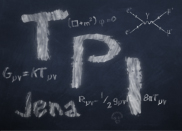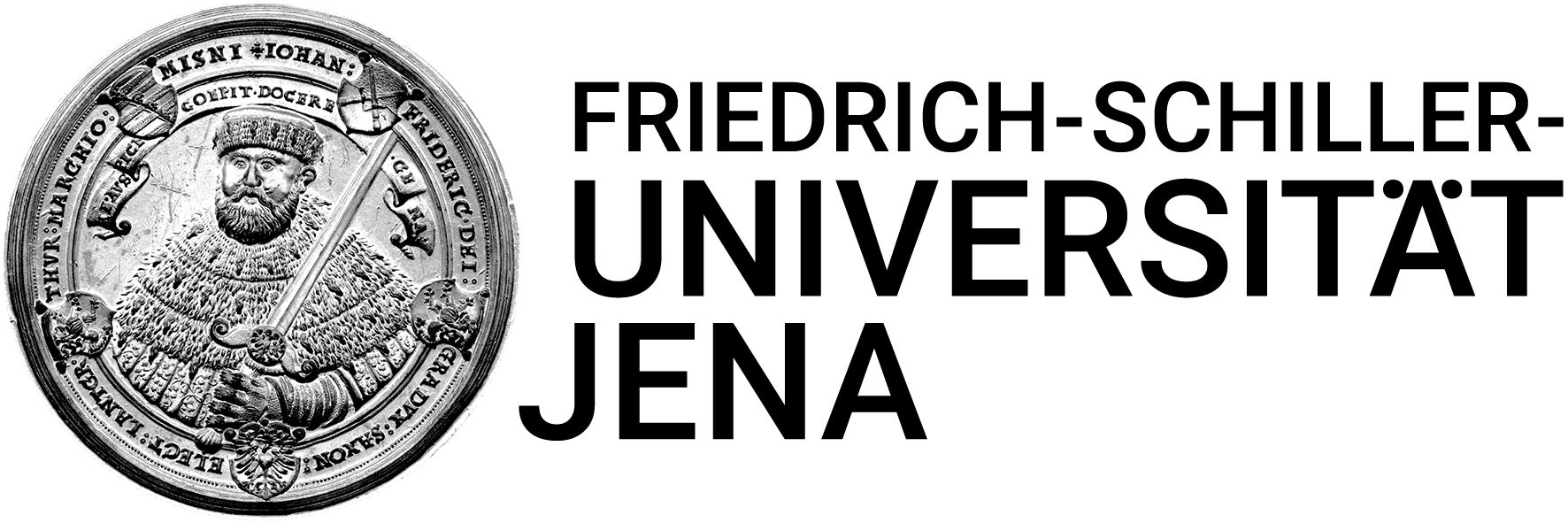Georg Bergner

Dr. habil. Georg Bergner
Theoretisch-Physikalisches Institut
Friedrich-Schiller-Universität Jena
Max-Wien-Platz 1
D-07743 Jena
Tel.: +49-3641-947139
Email:
georg.bergner
uni-jena.de
Room: Abb 202
Lattice gauge theory:
New results and recent developments
(Seminar at the ITP)
Thursday 12:30-14:00, room 02.114 (summer semester 2013)
external speakers are highlighted
| Date | Talk |
|---|---|
| 11.4.2013 14:00 - 15:00 |
Organization |
| 18.4.2013 | No seminar |
| 25.4.2013 |
Wolfgang Unger
|
| 2.5.2013 | No seminar |
| 16.5.2013 |
Carsten Urbach
|
| 23.5.2013 |
Krzysztof Cichy
Overlap valence quarks on a twisted mass sea: a case study for mixed action Lattice QCD
We discuss a Lattice QCD mixed action investigation employing Wilson maximally twisted mass sea and overlap valence fermions. Using four values of the lattice spacing, ranging from 0.04 to 0.08 fm, we demonstrate that by adopting suitable matching conditions for the sea and valence theories a consistent continuum limit for the pion decay constant and light baryon masses can be obtained. We emphasize the effects of the topological zero modes appearing in the valence overlap Dirac operator. We estimate the region of parameter space where the contribution from these zero modes is sufficiently small, such that their effects can be safely controlled and a restoration of unitarity of the mixed action in the continuum limit is reached. We also discuss additional aspects of this mixed action setup: the recovery of point-like locality in the continuum limit, the results for the sea-valence mixed meson masses and the description of the valence scalar correlator with chiral perturbation theory, leading to an extraction of low energy constants characterizing the strength of unitarity violations at finite lattice spacing.
|
| 30.5.2013 | No seminar |
| 6.6.2013 |
GPU-Programming
|
| 13.6.2013 |
Urs Wenger
Spontaneous supersymmetry breaking on the lattice
Supersymmetric quantum field theories can be regularised on a space-time
lattice following various strategies. However, in general simulations of
lattice models with spontaneously broken supersymmetry suffer from a
fermion sign problem related to the vanishing of the Witten index. I
will discuss a novel approach which evades this problem in low
dimensions by formulating the path integral on the lattice in terms of
fermion loops. Then I will present exact results on the spectrum and the
Witten index for N=2 supersymmetric quantum mechanics and results from
simulations of the spontaneously broken N=1 Wess-Zumino model.
|
| 20.6.2013 |
no seminar
|
| 27.6.2013 |
Mathias Neuman
Solving the sign problem with complex Langevin
|
| 4.7.2013 |
Gregorio Herdoiza
Determination of Low-Energy Constants of Wilson Chiral Perturbation Theory
The stability region of lattice QCD simulations with Wilson-type fermions and the size to cutoff effects in the low-energy regime can be analysed in terms of Wilson Chiral Perturbation Theory (WChPT). By matching Wilson twisted mass lattice QCD determinations of pseudoscalar meson masses to WChPT, we determine the low-energy constants (LECs) of this effective theory. In order to identify a lattice setup which could be less affected by discretisation effects, we explore the dependence of these LECs on the choice of the lattice action and on the number of dynamical flavours.
|
| 11.7.2013 | No seminar |
| 18.7.2013 |
Christian Schäfer
Semiclassical real-time approach to QCD
|

